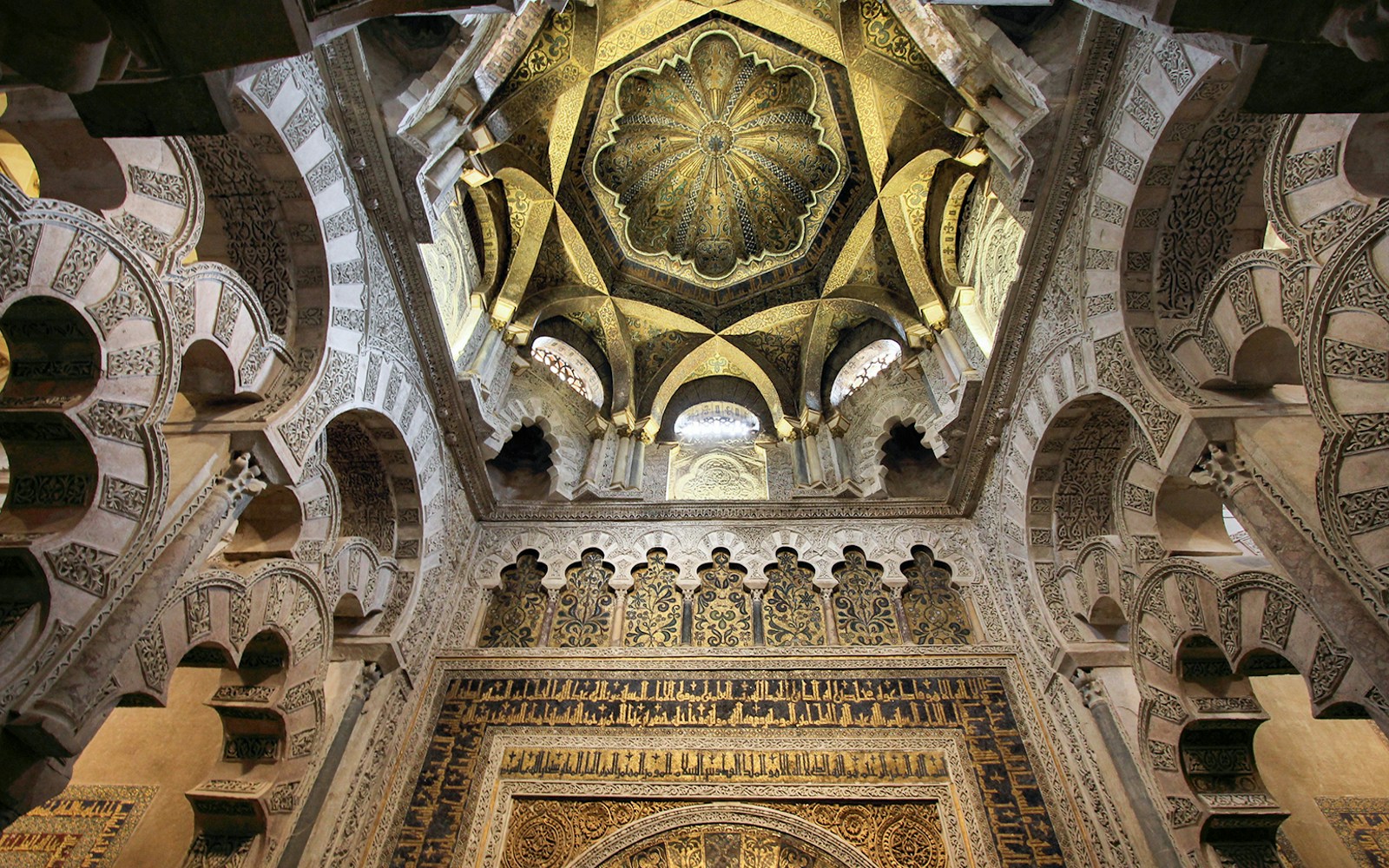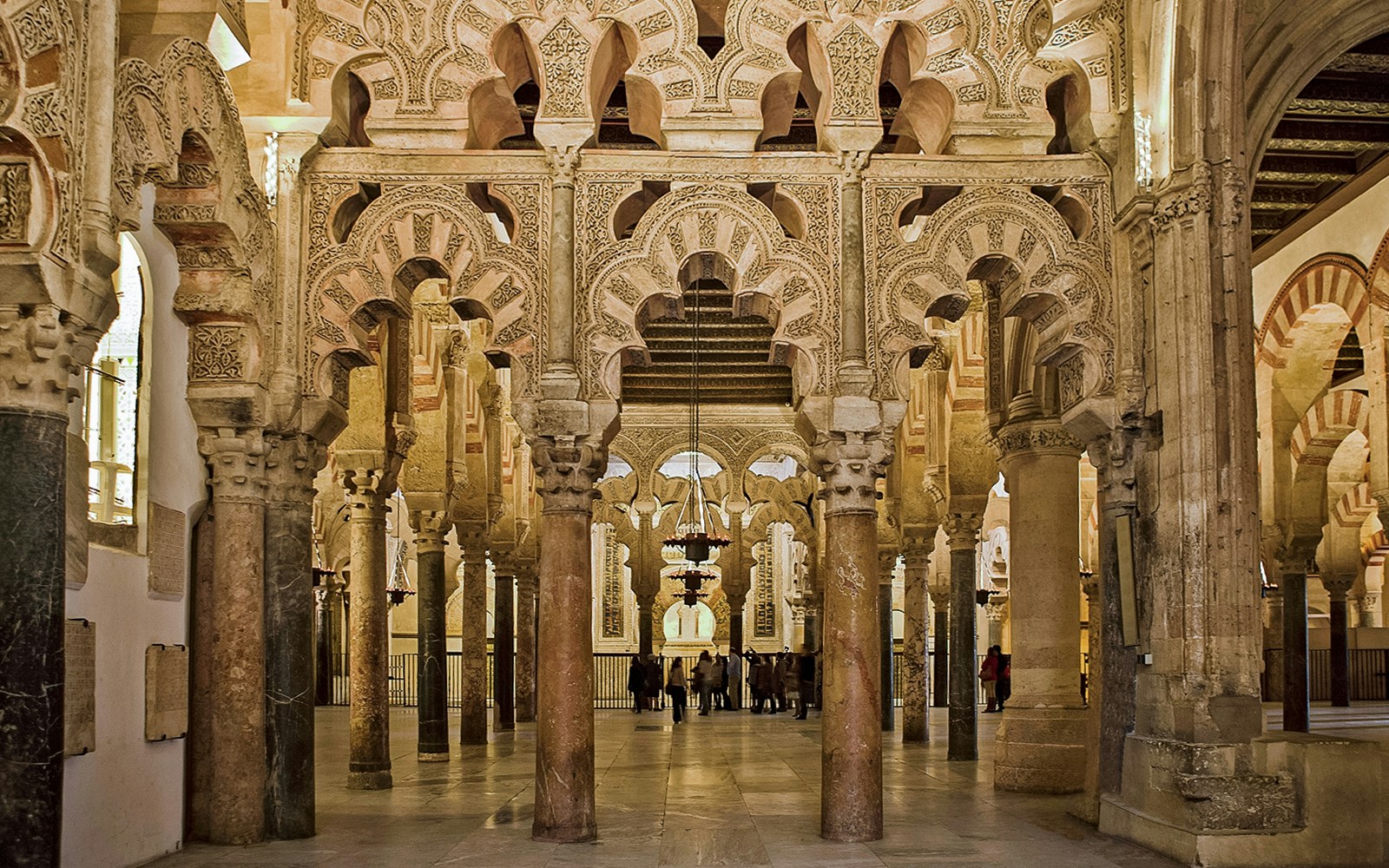History of the Great Mosque of Cordoba in a nutshell
To truly appreciate the Cordoba Mezquita, one must delve into its rich history, which traces back to the Umayyad dynasty in Damascus, Syria.The mosque was built in 785 AD during the reign of Abd ar-Rahman I, the first Umayyad Caliph of Cordoba, in the late 8th century.
The mosque was expanded by several rulers, including Abd al-Rahman II, Al-Hakam II, and Al-Mansur till the late 10th century until King Ferdinand III of Castile captured Córdoba. This change in political situation was followed by the conversion of the mosque to a cathedral in 1236.
Remarkably, the mosque, originally built during Islamic rule, avoided destruction during the transition to Christian hands. Instead, under Ferdinand III, it was transformed into a Christian cathedral. Initially, chapels were integrated into the mosque's walls, eventually leading to the construction of a grand Gothic cathedral at its heart.
More about the history of Cordoba Mosque.



















